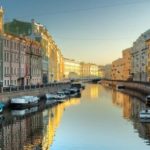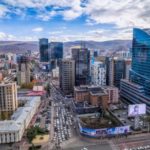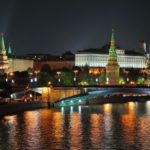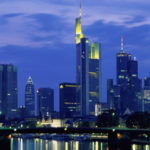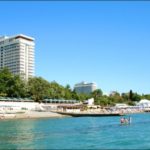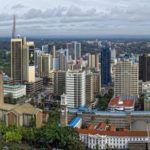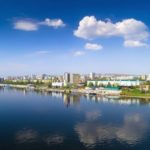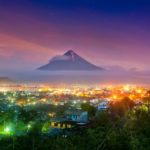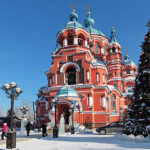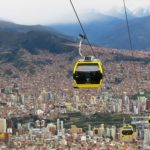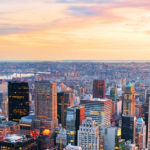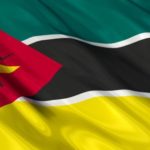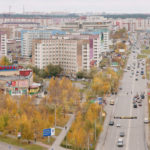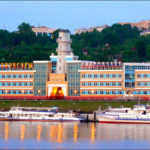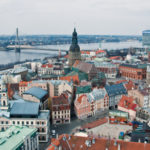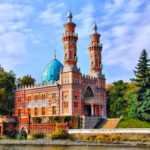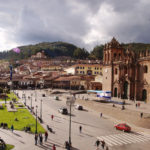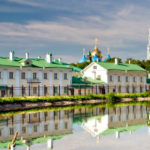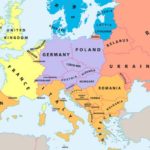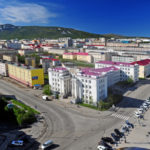Interesting facts about Krasnodar
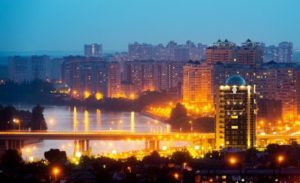 Krasnodar is one of the largest southern cities of our vast homeland. It is here that financial and economic flows flow from all around the city, and the city itself is rapidly developing. Many people move here, including from Moscow and St. Petersburg, attracted by more humane prices and a mild climate. Local residents are often proudly called Krasnodar the southern capital of the country, by analogy with St. Petersburg – the northern capital.
Krasnodar is one of the largest southern cities of our vast homeland. It is here that financial and economic flows flow from all around the city, and the city itself is rapidly developing. Many people move here, including from Moscow and St. Petersburg, attracted by more humane prices and a mild climate. Local residents are often proudly called Krasnodar the southern capital of the country, by analogy with St. Petersburg – the northern capital.
Krasnodar is located in a seismically dangerous zone – as a rule, the epicenter of earthquakes is located on the bottom of the Black Sea, but the tremors are felt on city streets. Fortunately, not a single devastating earthquake has ever occurred in the history of Krasnodar.
Through Krasnodar flows the largest of the North Caucasian rivers – Kuban. The basin of the river covers an area of almost 58 thousand square kilometers.
Krasnodar, according to statistics, is leading among Russian cities by the number of cars per thousand townspeople – 437 (for comparison, in Moscow this figure is 417 cars).
The first 120 years of its existence (until 1920) Krasnodar was called Ekaterinodar – so the Kuban Cossacks thanked the Empress Catherine II for the land given to them for settlement.
Krasnodar was occupied by German invaders and entered the top ten most affected during the war cities of the USSR. After the end of hostilities, the ruins of the old city were demolished, and new quarters were built in their place.
Krasnodar is included in the City-600 rating, which unites 600 cities of the world with the greatest economic importance.
In Krasnodar there is the Kuban Cossack Choir, which is the only collective of folk art in the Russian Federation, whose history stretches from the beginning of the 19th century.
Krasnodar Park “Chistyakovskaya Grove” was recognized as the best entertainment park in Russia with a number of visitors up to 500 thousand people.
In Krasnodar there is a water tower, designed by the great engineer and scientist Vladimir Shukhov. A cultural monument of federal significance is located near the circus building.
In 2012, the illumination of the jets of the fountain, beating before the Triumphal Arch in Krasnodar, became possible to control with the help of a smartphone. Before that, such equipment was not used anywhere in the world.
In Krasnodar on Gogol Street there is a monument to a purse entered into the top 50 most amazing Russian monuments. In the city there are other interesting monuments – the sculpture “Loving Dogs” on Red Street, the sculpture “Students” (the picture of Leonid Gaidai’s film about Shurik’s adventures depicted in bronze from the film by Leonid Gaidai) and the composition “The Connection of Generations” (depicts a veteran sitting on a bench and a little girl, standing in front of him).
Rock group from Switzerland Lacrimosa wrote about Krasnodar song I Lost My Star in Krasnodar.
Honorary citizens of Krasnodar are the singer Iosif Kobzon, the pilot-cosmonaut, the hero of the USSR Victor Gorbatko, the Russian cosmonaut Gennady Padalka and the Olympic champion Alexander Moskalenko.
During the war, Krasnodar became the first city in Europe, where the Nazis used the so-called “gas vans” – mobile gas chambers. During the occupation and military operations, the city’s population decreased by more than 30 thousand people.

